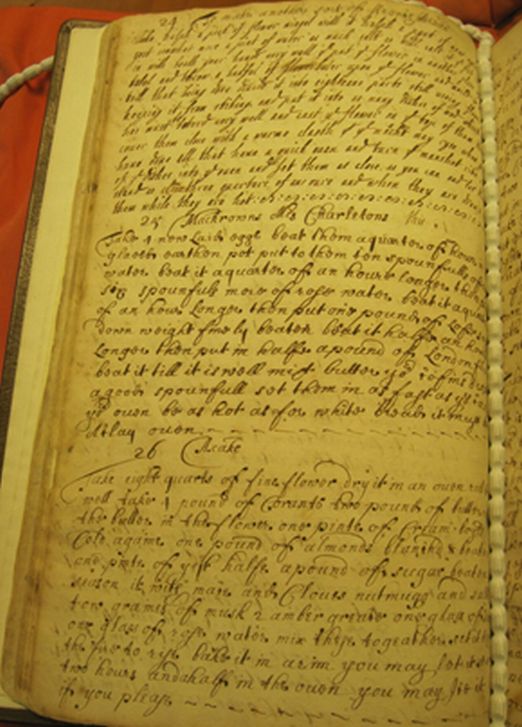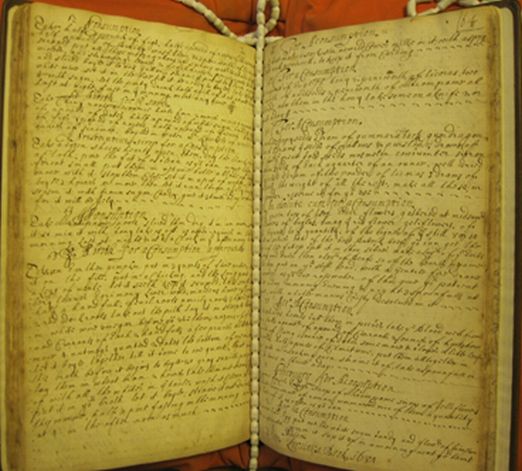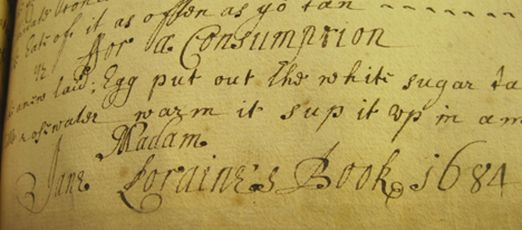This additional treasure of the month has been provided by Catherine Alexander, a student in the School of English Literature, Language and Linguistics, who has recently completed a summer research project based around a seventeenth-century recipe book, held in Special Collections.

This is a seventeenth century cook book manuscript, written by Jane Loraine, who lived in Northumberland. She is likely to have been the wife of Nicholas Loraine, son of Ambrose Loraine of Hartburn, and probably a member of the Fenwick family. The cook book is firmly rooted in Northumberland, and there are extensive records of the Loraine family in Kirkharle. Reference to individuals also demonstrates a local community; in this recipe Mrs Charleton’s surname locates her in Charlton, near Bellingham in North Tynedale. There are 67 recipes attributed to 41 individuals in this cook book, only 13 of whom are men.
To maike mackrowns page 31
fol. 24V
25 Mackrowns Mrs Charletons this
Take 4 new Laid eggs beat them a quarter of an houre in a glased earthen pot put to them ten spoun fulls of rose water beat it a quarter of an houre longer then put six spounfuls more of rose water beat it a quarter or an hour Longer then put one pound of lose sugar down weight finely beaten beat it halfe an houre Longer then put in halfe a pound of London flower beat it till it is well mixt butter your cofins deep in a good spounfull set them in as fast as you can let your oven be as hot as for white bread it must be A clay oven
The manuscript, in folio format, is 78 pages long and contains 665 recipes. The page numbering, added later, shows missing pages.
The annotation beside the recipe title: ‘this‘, shows use of the book and the selection process for the contents page.

This manuscript is typical in its medical emphasis and over half of the recipes are medical, while only a quarter are culinary. These food recipes focus on cakes, creams and preserves, while the medical receipts cover a range of illnesses, focusing on common concerns such as consumption, and women’s health, particularly childbirth. There are also some recipes for beauty treatments and perfumes. Nine percent of the recipes represent the overlap between food and health, in the waters and wines which function as drinks as well as preventative medicines and cures.

This hybridity has an impact on the domestic roles of women, as they commanded authority on medical as well as culinary issues.
Many parallels and similarities can be seen with other cook book manuscripts and printed texts at this time, and this manuscript is part of a widespread communication of ideas and advice. This genre was popular in the seventeenth century and gave women a literary voice.
Collaboration is also typical within the recipe book format, and this can be seen through reference to individuals as well as in the six different handwritings identifiable in the text. The secretary hand which dominates 70% of the text can be associated with Jane Loraine, through the 13 signatures given. Many of these are dated between 1684-6.
Further information about this manuscript can be found on the Turning Pages software in the School of English.

